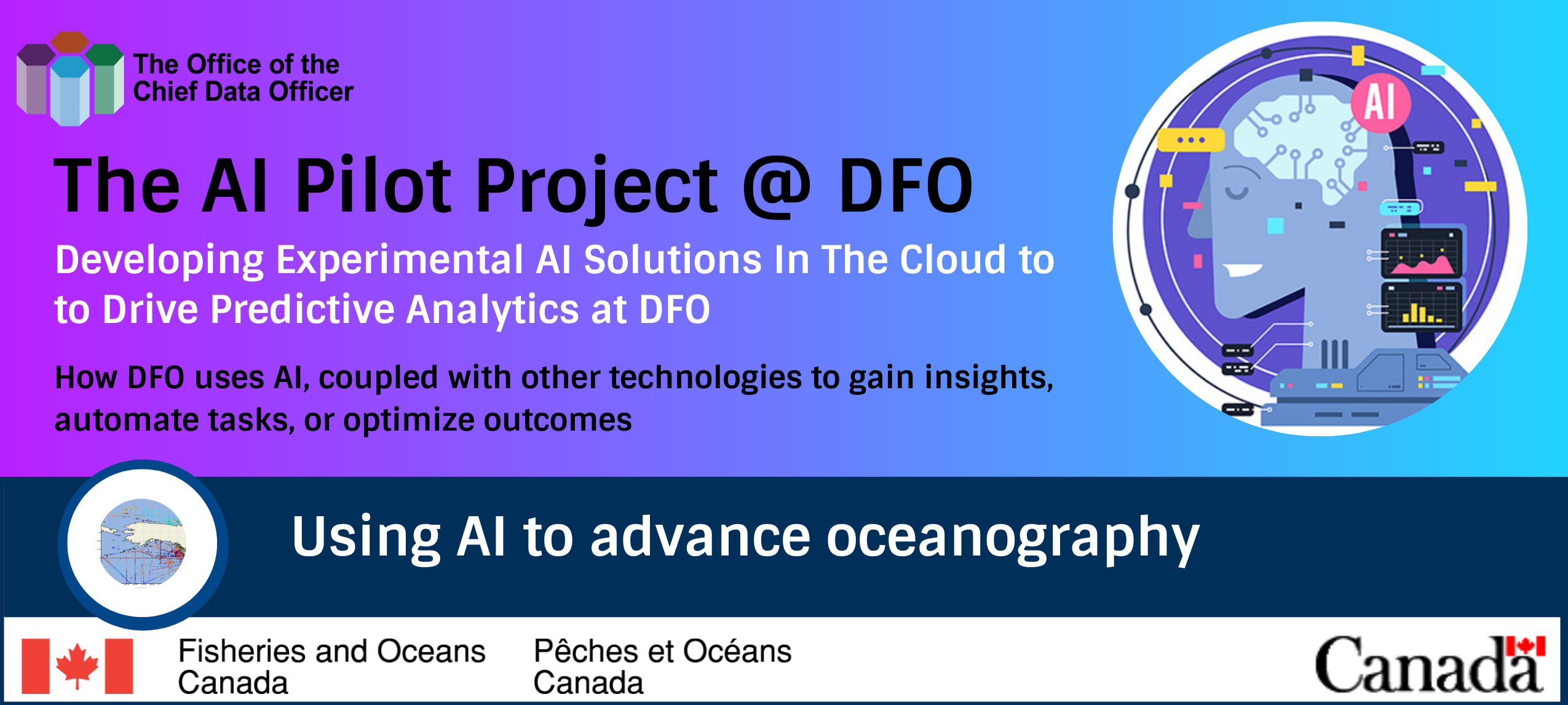Difference between revisions of "Using AI to advance oceanography"
| Line 22: | Line 22: | ||
The Department of Fisheries and Oceans (DFO) Canada has been surveying Canada’s oceans to monitor the evolution of Canada’s oceans, as well as to perform scientific research. The department frequently collects ocean observations using in situ measurements. Ocean data is considered multidimensional data where ocean observations are collected at different depths of the ocean. The amount of ocean data and data dimensions are rising sharply. Scientists tried to use simulations to simulate the ocean environment. However''', ocean simulation models don’t reflect the complex relationship between the different ocean observations. Moreover, current traditional ocean data analysis mostly uses manual classification and recognition. This can be resource-intensive, time-consuming, and requires a specific kind of expertise.''' | The Department of Fisheries and Oceans (DFO) Canada has been surveying Canada’s oceans to monitor the evolution of Canada’s oceans, as well as to perform scientific research. The department frequently collects ocean observations using in situ measurements. Ocean data is considered multidimensional data where ocean observations are collected at different depths of the ocean. The amount of ocean data and data dimensions are rising sharply. Scientists tried to use simulations to simulate the ocean environment. However''', ocean simulation models don’t reflect the complex relationship between the different ocean observations. Moreover, current traditional ocean data analysis mostly uses manual classification and recognition. This can be resource-intensive, time-consuming, and requires a specific kind of expertise.''' | ||
| + | |||
== The Solution == | == The Solution == | ||
Data-driven analysis approaches are better suited for such type of analysis. | Data-driven analysis approaches are better suited for such type of analysis. | ||
Revision as of 13:08, 17 December 2021
AI can provide a data-driven approach to analyze ocean data.
DFO has developed a predictive model to sift through the data
piles of ocean data to find (dis-)similarities between
multidimensional profiles of oceanographic data. The insights
gained from the model can be used to answer many questions
about dynamic changes in our oceans.
The Challenge

The Department of Fisheries and Oceans (DFO) Canada has been surveying Canada’s oceans to monitor the evolution of Canada’s oceans, as well as to perform scientific research. The department frequently collects ocean observations using in situ measurements. Ocean data is considered multidimensional data where ocean observations are collected at different depths of the ocean. The amount of ocean data and data dimensions are rising sharply. Scientists tried to use simulations to simulate the ocean environment. However, ocean simulation models don’t reflect the complex relationship between the different ocean observations. Moreover, current traditional ocean data analysis mostly uses manual classification and recognition. This can be resource-intensive, time-consuming, and requires a specific kind of expertise.
The Solution
Data-driven analysis approaches are better suited for such type of analysis.

